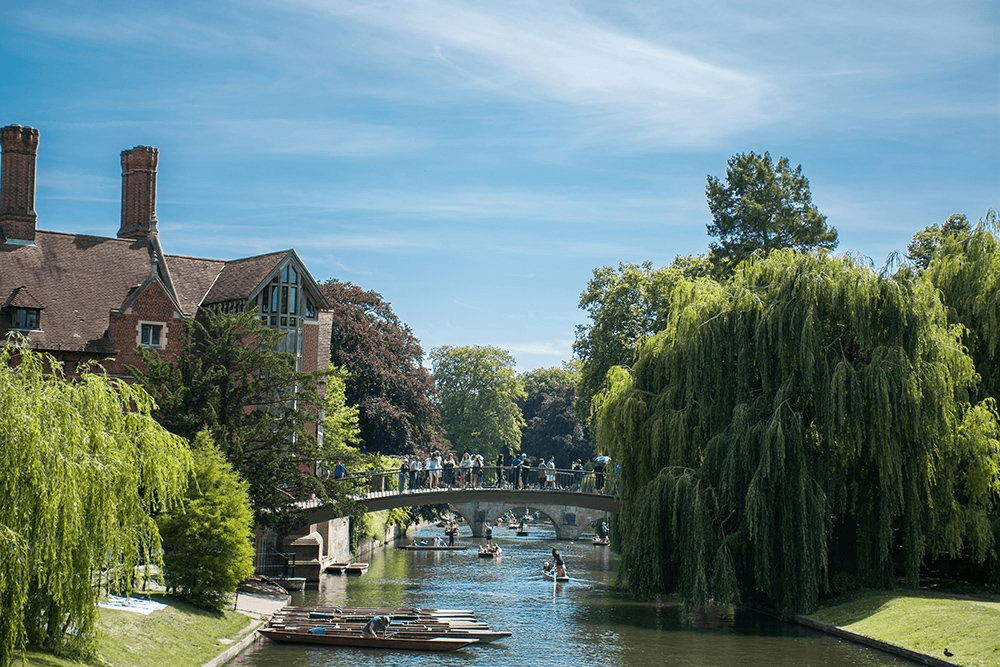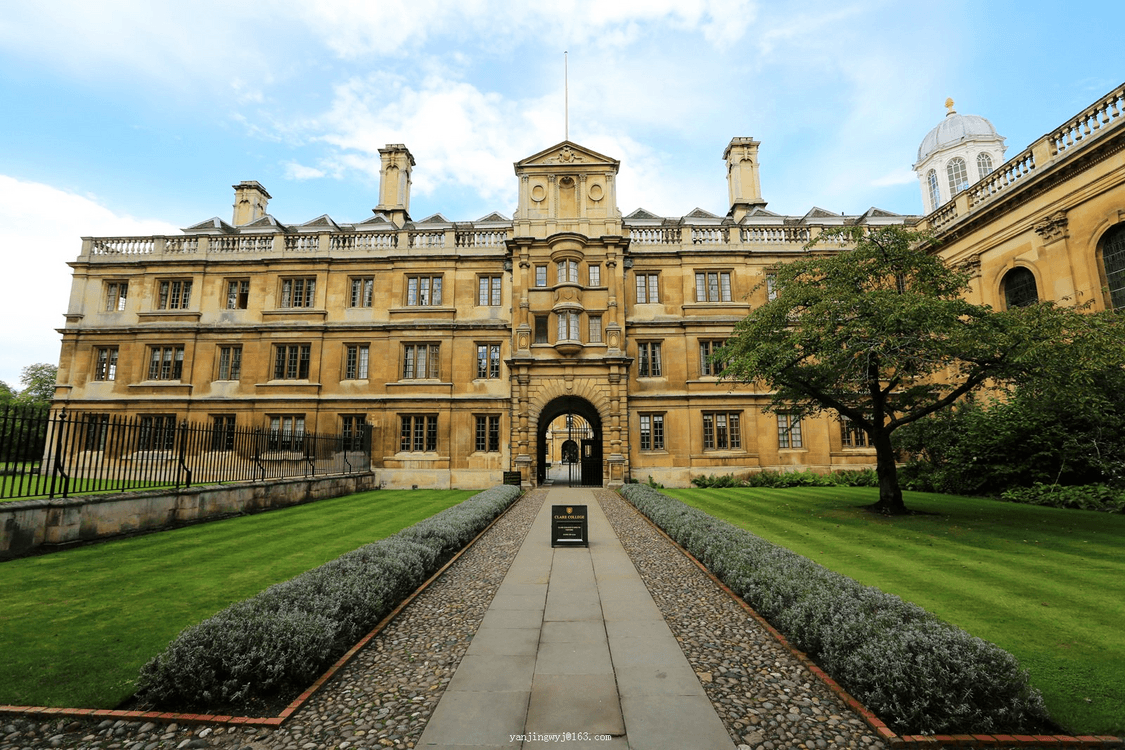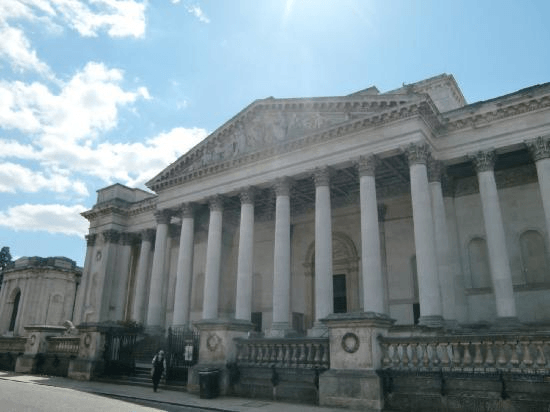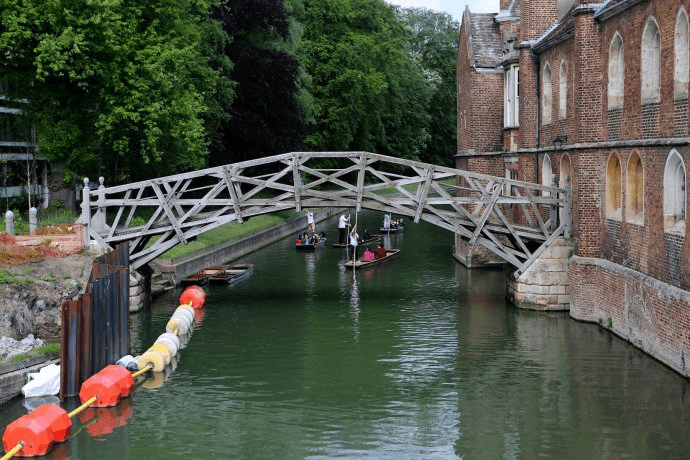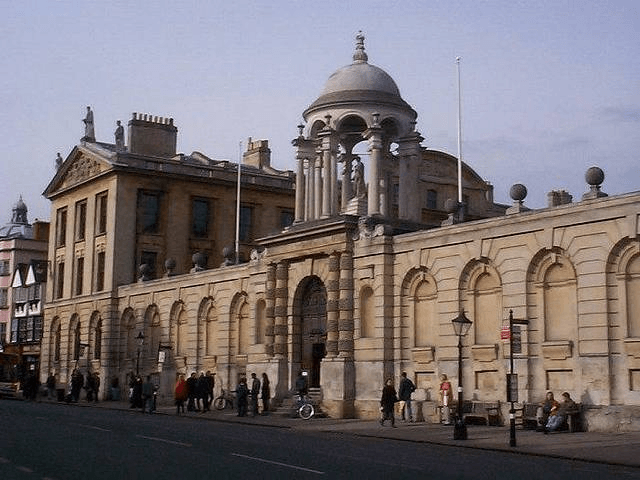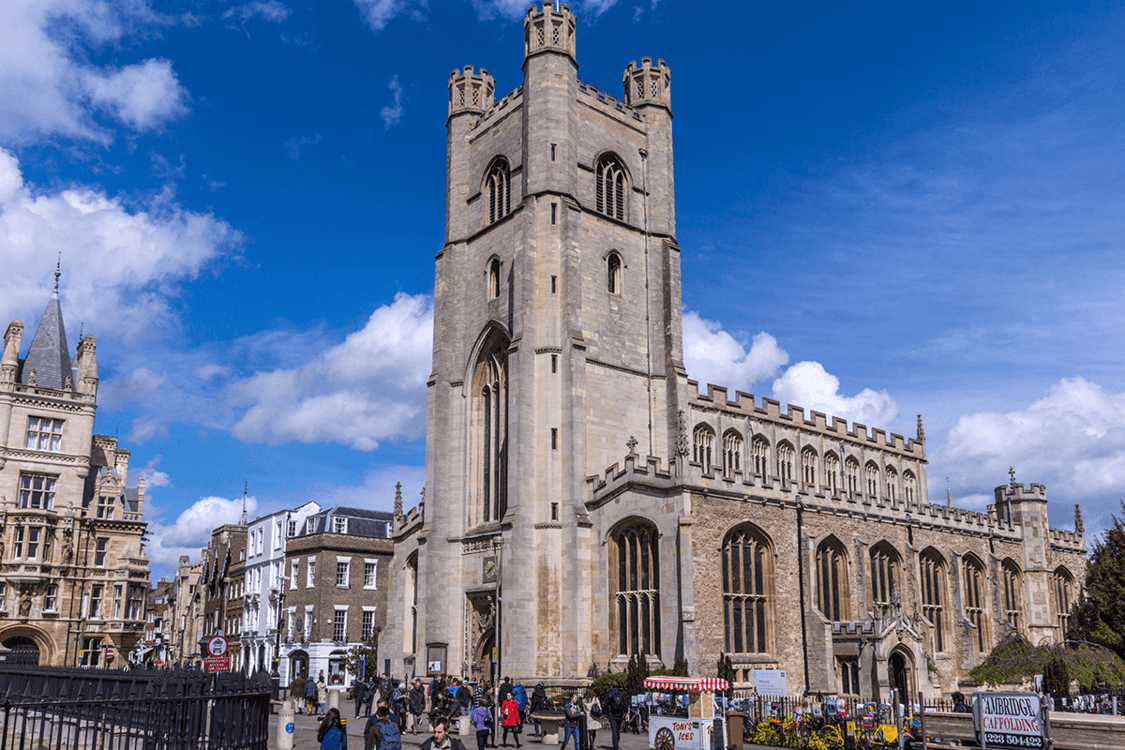Bridge of Sighs, Cambridge
The Bridge of Sighs is located on the River Cam and belongs to St John's College. It was built in 1831. According to legend, during exam season, students returning from the exam hall would sigh as they passed over this bridge, which is how it got its name. The Gothic railings symbolize the unique features of the Bridge of Sighs in Cambridge, allowing people to appreciate its beauty while boating on the River Cam. Its exquisite carvings make it one of the Queen's favorite buildings in Cambridge.
Trinity College
Trinity College is one of the most famous, wealthy, and beautiful of the 31 colleges at the University of Cambridge. It ranks at the top of Cambridge University in terms of academic achievements, economic strength, and college size. Trinity College has produced many famous figures, including the great scientist Newton, the renowned philosopher Bacon, several members of the royal family including Prince Charles, six British Prime Ministers, and multiple Nobel Prize winners. It is worth mentioning that it is said that the legendary apple tree, from which Newton was supposedly hit by an apple, is planted in the gardens here.
King's College
King's College is one of the most famous colleges of the University of Cambridge. It was founded in 1441 by King Henry VI of England, hence the name 'King's' College. It is one of the finest examples of Gothic architecture in the UK, especially the college's chapel. When visiting King's College, you can explore the buildings, courtyards, and chapel. The chapel's ceiling and stained glass windows are exquisitely detailed and breathtaking, and there are intricately carved wooden screens. The King's College Choir is also very famous.
Fitzwilliam Museum
The Fitzwilliam Museum is the largest art and archaeology museum in Cambridge and one of the earliest public art museums in the United Kingdom. It houses a vast collection of precious artworks, including Renaissance pieces by Michelangelo and Impressionist works by Picasso. Additionally, the museum holds valuable artifacts from Egypt, Greece, Rome, and China, with the most famous exhibit being the reliefs from Persepolis. Its exterior is a neoclassical building designed in the style of a Greek temple.
Mathematical Bridge
Walking into Queen's College, one can see an ancient bridge spanning the River Cam. This is the famous Mathematical Bridge, designed by William Etheridge II and built by James Essex in 1749. There is a legend that this bridge was designed and constructed by Newton without using a single nail or screw for fastening.
Corpus Clock
Located at the intersection of the central street in Cambridge, the Corpus Clock is a spectacular large sculptural clock and a landmark attraction of Cambridge. Unveiled by Stephen Hawking in 2008, the clock was also named one of the best inventions of 2008 by Time magazine and appeared in the Indian film 'Father'. At the start of each minute, the grasshopper on the clock opens its mouth, and at the end of each minute, it closes its mouth. The bottom of the clock is shaped like a coffin. It uses an animation of a grasshopper devouring time to remind people of the passage of time.
Peterhouse
Peterhouse, built in 1284, is the oldest and smallest college in Cambridge. A corridor connects the college to Little St Mary's Church, originally named St Peter's Church, from which the college derives its name. Although most of the buildings have been renovated, the college still retains a beautiful small chapel and an old courtyard, which are highlights of the college. Additionally, the college has produced three Nobel Prize winners and one Prime Minister.
St John's College
St John's College was founded in 1511 and is the second largest college of the University of Cambridge. It is also one of the most beautiful colleges in Cambridge, situated between the River Cam and the Bridge of Sighs. The college has 11 courts, the most among Cambridge colleges. The most famous is the Second Court, which began construction in 1589 and is described as the most beautiful Tudor court in England. The college's buildings are mainly in the Tudor and Jacobean styles, immersing visitors in a rich British classical atmosphere.
Queens' College
Queens' College is located on the west bank of the River Cam. It was founded in 1448 by Queen Margaret of Henry IV and in 1465 by Queen Woodville of Edward IV. The 'Queens'' in the college's name refers to these two queens. Queens' College is one of the most beautiful sights in Cambridge, spanning the River Cam and connected by the world-famous 'Mathematical Bridge'. The Queens' Garden on the west bank of the River Cam is filled with vibrant flowers and lush greenery.
The Eagle
Since its establishment in 1667, The Eagle pub has been one of the oldest and most famous pubs in Cambridge, offering traditional British snacks and beer. It was once the place where Nobel Prize winners Crick and Watson discussed the 'secret of life' (i.e., the study of the DNA double helix structure). Additionally, the pub's walls are adorned with signatures of World War II airmen.
Church of Our Lady, Cambridge
As one of the few churches in the UK with a movable pulpit, it can slide into the main altar from the track. It is also one of the few places with two pipe organs. The famous Westminster chimes originated here. Its spectacular architectural appearance, designed with vertical line windows, has a strong late perpendicular Gothic style, providing visitors with an infinitely beautiful visual experience.


